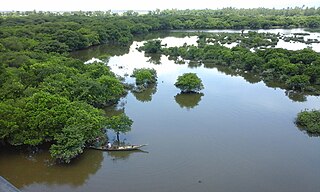This article's tone or style may not reflect the encyclopedic tone used on Wikipedia.(August 2008) (Learn how and when to remove this template message) |
This article does not cite any sources .(August 2008) (Learn how and when to remove this template message) |
The topic of this article may not meet Wikipedia's notability guidelines for companies and organizations .(April 2019) (Learn how and when to remove this template message) |
It is proposed that this article be deleted because of the following concern:
If you can address this concern by improving, copyediting, sourcing, renaming, or merging the page, please edit this page and do so. You may remove this message if you improve the article or otherwise object to deletion for any reason. Although not required, you are encouraged to explain why you object to the deletion, either in your edit summary or on the talk page. If this template is removed, do not replace it . The article may be deleted if this message remains in place for seven days, i.e., after 10:40, 8 April 2019 (UTC). Nominator: Please consider notifying the author/project: {{subst:proposed deletion notify |Mallee Catchment Management Authority|concern=The coverage (references, external links, etc.) does not seem sufficient to justify this article passing [[Wikipedia:General notability guideline]] and the more detailed [[Wikipedia:Notability (companies)]] requirement. If you disagree and deprod this, please explain how it meets them on the talk page here in the form of "This article meets criteria A and B because..." and [[WP:ECHO|ping me back]] through [[WP:ECHO]] or by leaving a note at [[User talk:Piotrus]]. Thank you.}} ~~~~ |
The Mallee Catchment Management Authority (CMA) region is the largest catchment area in Victoria, Australia, covering approximately 3.9 million hectares – almost one-fifth of the State.

The Catchment Management Authorities (CMAs) were established in Victoria, Catchment and Land Protection Act 1994. Originally known as Catchment and Land Protection Boards, the CMAs were changed to their present name in 1997.

Victoria is a state in south-eastern Australia. Victoria is Australia's smallest mainland state and its second-most populous state overall, making it the most densely populated state overall. Most of its population lives concentrated in the area surrounding Port Phillip Bay, which includes the metropolitan area of its state capital and largest city, Melbourne, Australia's second-largest city. Victoria is bordered by Bass Strait and Tasmania to the south, New South Wales to the north, the Tasman Sea to the east, and South Australia to the west.

Australia, officially the Commonwealth of Australia, is a sovereign country comprising the mainland of the Australian continent, the island of Tasmania and numerous smaller islands. It is the largest country in Oceania and the world's sixth-largest country by total area. The neighbouring countries are Papua New Guinea, Indonesia and East Timor to the north; the Solomon Islands and Vanuatu to the north-east; and New Zealand to the south-east. The population of 25 million is highly urbanised and heavily concentrated on the eastern seaboard. Australia's capital is Canberra, and its largest city is Sydney. The country's other major metropolitan areas are Melbourne, Brisbane, Perth and Adelaide.


